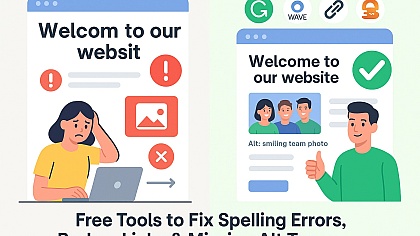
How to Paraphrase Meta Descriptions to Make Them Unique
Meta descriptions play a crucial role in search engine optimization (SEO). They not only help improve click-through rates (CTR) but also provide users with a concise summary of what to expect from a webpage. However, duplicate or generic meta descriptions can negatively impact rankings and user engagement. Learning how to paraphrase meta descriptions effectively can help make them unique, engaging, and SEO-friendly.
Why Unique Meta Descriptions Matter
Unique meta descriptions offer several benefits, including:
- Improved Search Rankings: While Google does not use meta descriptions as a direct ranking factor, compelling and relevant descriptions can increase CTR, indirectly boosting rankings.
- Better User Experience: A clear, well-written meta description helps users determine if a page matches their search intent.
- Avoiding Duplicate Content Issues: Search engines may penalize websites with duplicate meta descriptions by lowering their visibility.
Steps to Paraphrase Meta Descriptions Effectively
1. Understand the Page Content
Before rewriting a meta description, understand the key message of the page. Identify the main topic, keywords, and value proposition. This ensures the description remains relevant and accurately reflects the content.
2. Use Synonyms and Alternative Phrasing
Replace common words with synonyms or restructure the sentence while keeping the core meaning intact.
For example: Original: "Learn how to improve your SEO rankings with these expert tips."
Paraphrased: "Discover expert strategies to boost your website's search rankings."
3. Highlight Unique Selling Points
Emphasize what makes the page unique by incorporating special offers, statistics, or exclusive insights.
For instance: Original: "Get the best tips for writing engaging blog posts."
Paraphrased: "Master the art of blogging with these expert-backed writing techniques."
4. Maintain an Engaging and Concise Tone
Meta descriptions should be compelling yet concise (around 150-160 characters). Use action-oriented language to encourage clicks.
Example: "Explore proven strategies to grow your online presence and attract more visitors."
5. Incorporate Relevant Keywords Naturally
Include primary and secondary keywords without keyword stuffing. Ensure they blend naturally into the sentence to enhance readability.
Example: "Optimize your website's SEO with these easy-to-apply digital marketing tips."
6. Personalize for User Intent
Consider the intent behind a user’s search query and tailor the description accordingly. For informational searches, focus on insights; for transactional searches, highlight benefits or offers.
7. A/B Test Different Versions
Experiment with different variations of meta descriptions and analyze their performance using Google Search Console. Testing helps identify the most effective wording for maximizing CTR.
Tools to Help Paraphrase Meta Descriptions

Several online tools can assist in rewriting meta descriptions, including:
- Thesaurus.com: Find synonyms to avoid repetitive wording.
- Grammarly & QuillBot: AI-powered rewriting tools for better clarity and engagement.
- Google Search Console: Analyze CTR and tweak descriptions accordingly.
Paraphrasing meta descriptions effectively enhances SEO by making them unique, engaging, and keyword-optimized. By following best practices like using synonyms, highlighting unique value, and testing different variations, you can craft compelling meta descriptions that boost your website's visibility and click-through rate. Start optimizing today and watch your search rankings improve!














